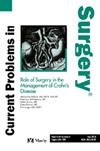利用可穿戴技术评估腹腔镜手术训练期间的生理应激
IF 1.9
3区 医学
Q2 SURGERY
引用次数: 0
摘要
应激对外科住院医师的腹腔镜检查有负面影响。本研究利用可穿戴技术评估生理应激与运动表现之间的关系。方法普外科住院医师采用猪模型参加为期2天的腹腔镜培训课程。使用佩戴在胸前的心电传感器测量平均心率和心率变异性(HRV)参数,包括R-R区间的标准差(SDNN)和R-R区间连续差异的均方根(RMSSD)。采用全球腹腔镜手术技能评估(goal)和客观表现评定量表(OPRS)评估手术表现。静息、基线和术中测量参数。第1天和第2天组内比较。分析了参数变化与手术性能随时间变化的相关性。结果初级住院医师(PGY1-2, n=5)和高级住院医师(PGY3-5, n=5)组成小组,轮流担任主刀和助理医师。初级医师主导基本手术(胆囊切除术、切口疝修补),有资深医师协助。高年级学生处理高级手术(尼森基底切除术、脾切除术、结肠切除术),高年级学生协助。无论角色如何,与休息相比,所有参与者在每次手术期间的压力水平都有所提高,在脾切除术和结肠切除术期间达到最高水平。跨时间分析显示,较高的平均心率与较低的表现相关(r=-0.41, p=0.07),而较高的SDNN和RMSSD与较高的表现相关(r=0.56, p=0.008; r=0.63, p<0.001)。结论减少生理应激可提高腹腔镜手术效果。可穿戴技术有望改善外科手术培训。本文章由计算机程序翻译,如有差异,请以英文原文为准。
Utilization of wearable technology to assess physiological stress during laparoscopic surgery training
Background
Stress negatively impacts laparoscopic performance in surgical residents. This study evaluated the relationship between physiological stress and performance using wearable technology.
Methods
General surgery residents participated in a 2-day laparoscopic training course using live porcine models. Mean heart rate along with heart rate variability (HRV) parameters including standard deviation of R-R intervals (SDNN) and root-mean-square of successive differences of R-R intervals (RMSSD), were measured using a chest-worn ECG sensor. Operative performance was assessed using the Global Operative Assessment of Laparoscopic Skills (GOALS) and the Objective Performance Rating Scale (OPRS). Parameters were measured at rest, baseline, and intraoperatively. Comparison between day-1 and day-2 were performed within groups. Correlations between changes in parameters and operative performance across time were analyzed.
Results
Junior (PGY1-2, n=5) and senior (PGY3-5, n=5) residents formed teams, alternating as primary surgeon and assistant. Juniors led basic procedures (cholecystectomy, incisional hernia repair) having seniors assisting. Seniors handled advanced ones (Nissen fundoplication, splenectomy, colon-resection) having juniors assisting. Regardless of role, stress levels were elevated in all participants during each procedure compared to rest, peaking highest during splenectomies and colon resections. Analyses across time revealed that higher mean heart rate correlated with lower performance (r=-0.41, p=0.07), while higher SDNN and RMSSD correlated with higher performance (r=0.56, p=0.008; r=0.63, p<0.001, respectively).
Conclusions
Reducing physiological stress can enhance laparoscopic performance. Wearable technology shows promise for improving surgical training.
求助全文
通过发布文献求助,成功后即可免费获取论文全文。
去求助
来源期刊
CiteScore
5.20
自引率
0.00%
发文量
47
审稿时长
18 days
期刊介绍:
Current Problems in Surgery keeps readers up-to-date on the latest surgical advances. Each month, this publication examines a single clinical problem or condition commonly seen by general surgeons. Issues also focus on topics in surgical research and emerging ideas in surgical subspecialties. Current Problems in Surgery is ideal for information too urgent to await book publication, yet too important to be summarized in a brief journal article.

 求助内容:
求助内容: 应助结果提醒方式:
应助结果提醒方式:


